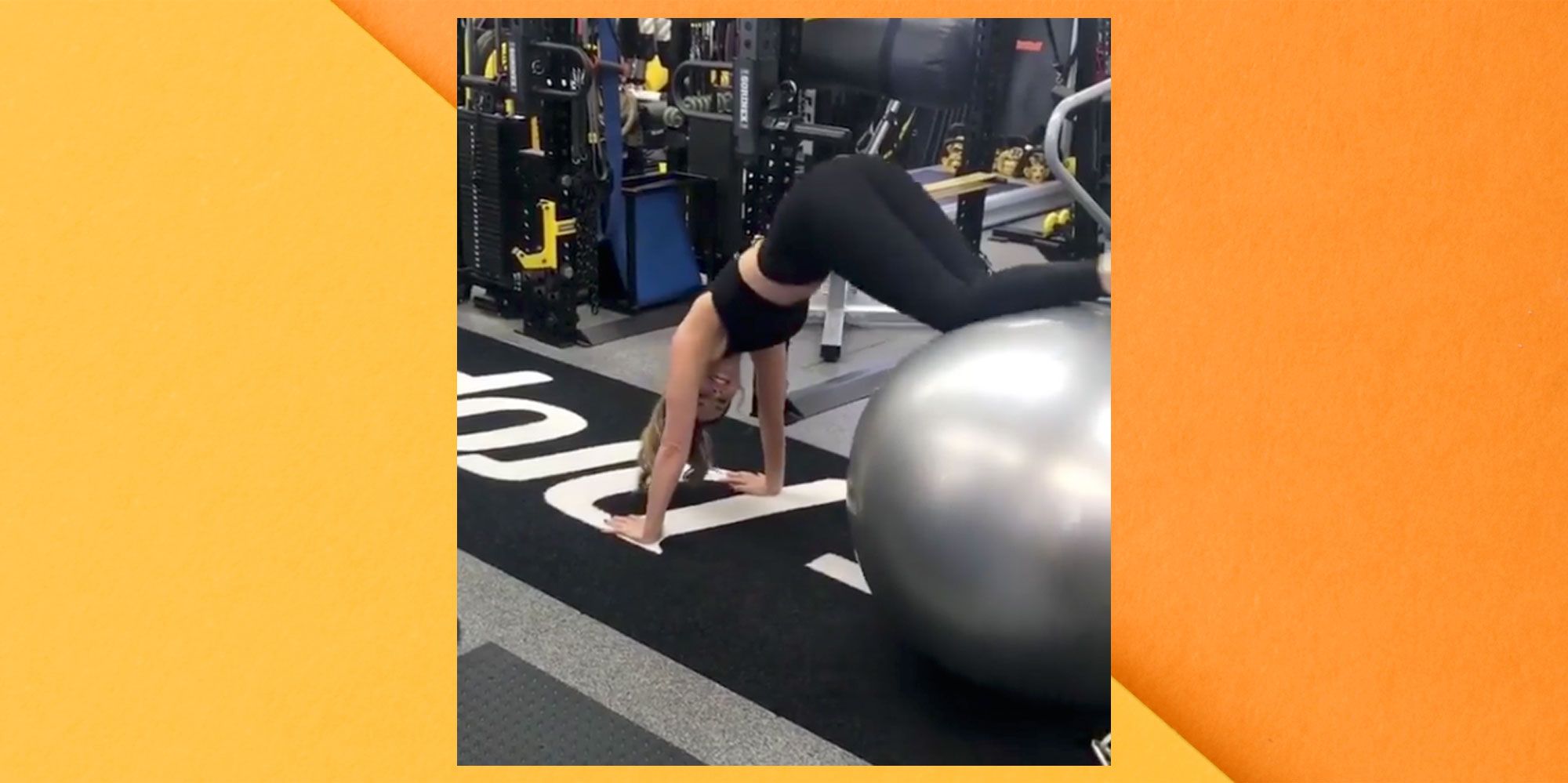The Right Exercise Ball For You Depends On How Tall You Are
First things first: an exercise ball = physio ball = stability ball = fitness ball. Got that? Good.
“A stability ball is a great way to amp up exercises for the entire body: upper, lower, and core.”
No matter what you call it, this inflatable sphere is an essential—and versatile!—piece of workout equipment. “Not only is it applicable to people of all levels—from beginners to advanced—but a stability ball is a great way to amp up exercises for the entire body: upper, lower, and core” says Laura Miranda, DPT, CSCS, New York City-based personal trainer and fitness expert. “It can function as a form of resistance, albeit light, much like a dumbbell, kettlebell, or barbell, or it can work as a platform on top of which you perform exercises,”
And, in case you’re still not totally sold (TBH, why tho?), exercise balls are also relatively inexpensive, ranging from $15–$30 on average, making them one piece of home gym equipment that’s definitely worth the investment.
Okay, what size exercise ball should I by?
There’s no one-size-fits-all situation with exercise balls. Instead, finding the right one for you depends on a few factors (more on that in a minute), but in general, you can use this chart below as a guide.
- Height: Under 4’8” » Ball size: 45 cm/18”
- Height: 4’8 to 5’3” » Ball size: 55 cm/22”
- Height: 5’4” to 5’10” » Ball size:65 cm/26”
- Height: 5’11” to 6’4” » Ball size: 75 cm/30”
- Height: 6’4” and up » Ball size: 85 cm/34”
Other than that, a good rule is that the smaller the ball, the bigger the challenge. So consider scaling up or down depending on your fitness level and how you plan to use yours. For example, tinier stability balls make for hardcore abs exercises, while a bigger one is beneficial if you intend to swap it in for a workout bench.
The benefits of working out with an exercise ball
Essentially, when you perform moves on an unstable surface, it requires you to engage even more muscles and thus is harder, Miranda explains. Case in point? Doing crunches on a stability ball fires your core muscles up more than doing them on a flat surface, according to a 2007 study.
For example, you can do a plank with your arms on an exercise ball (as demo’d below), which challenges you to stabilize in a different way.
An exercise ball also has a well-deserved place in your flexibility training routine; it’s especially useful when it comes to loosening up your hamstrings and lower back. Instead of just doing a basic forward fold and trying to touch your toes, Miranda recommends using the ball to slowly walk your hands in and out for a deeper stretch.

Using a physio ball may also improve spinal stability, which can be particularly beneficial for those who spend a lot of time sitting (*raises hand*) and are prone to back pain, per research.
And, finally, any mistakes I should avoid?
Great question 👏 . Like with any piece of exercise equipment, safety comes first, so….
Steer clear of sitting on the ball to lift weights. “This will not increase core stability’ or cause the core to work harder, but rather increase spinal compression, especially if you’re sitting on a slightly flexed spine,” Miranda explains.
Instead, kneel on the ball, lie back on it with your feet flat on the floor, or balance on your stomach in plank pose to lift weights in order to reap those major core-boosting benefits.
Other than that, the, er, ball is really in your court for how you work one into your fitness routine.
Source: Read Full Article
